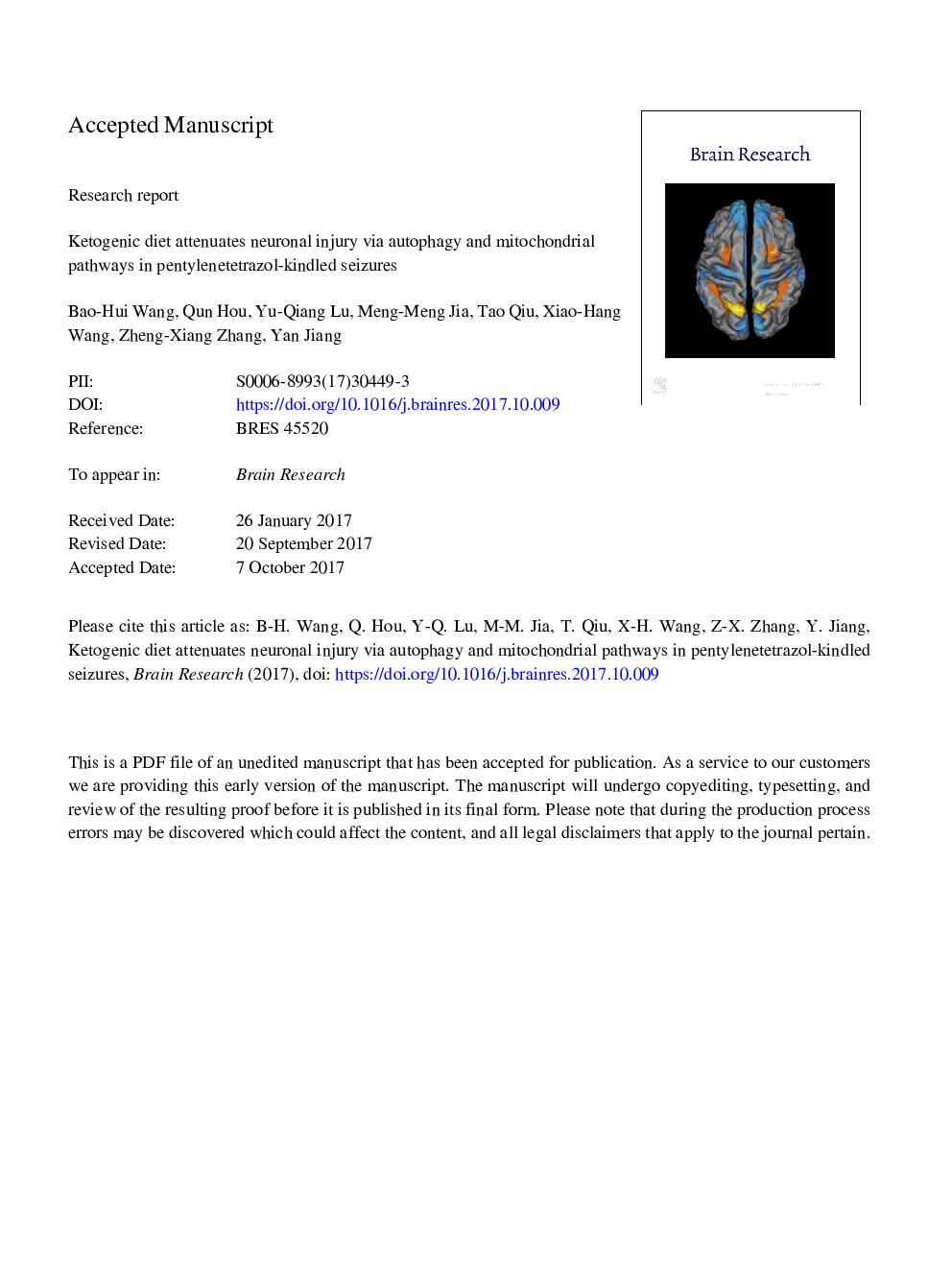| Article ID | Journal | Published Year | Pages | File Type |
|---|---|---|---|---|
| 8839948 | Brain Research | 2018 | 31 Pages |
Abstract
Autophagy alterations have been observed in a variety of neurological disorders, however, very few studies have focused on autophagy alterations in epilepsy. The ketogenic diet (KD) likely ameliorates neuronal loss in several seizure models. However, whether this neuroprotective function occurs via starvation-induced autophagy and its prevalence in chronic kindled seizures remains unknown. The aim of this study was to determine the role of autophagy following seizure under KD, and the potential mechanism involved. Pentylenetetrazol (PTZ)-kindled rats, which were fed a Normal diet (ND) or KD, were pretreated with intraventricular infusions of saline, autophagy inducer rapamycin (RAP), or inhibitor 3-methyladenine (3-MA). KD alleviated seizure severity, decreased the number of Fluoro-jade B (FJB)-positive cells in the hippocampus of kindled rats. These effects were abolished by 3-MA pretreatment. RAP pretreatment did not affect seizure severity, but decreased the number of FJB-positive cells in ND group. KD decreased the percentage of damaged mitochondria in kindled group. Hippocampal Beclin-1 was increased by KD in vehicle group. The autophagy proteins Atg5, Beclin-1 and the ratio of microtubule-associated protein 1 light chain 3 (LC3) II to LC3-I in kindled KD-fed rats were higher, and the autophagy substrate P62 was lower than those in the kindled ND-fed rats, indicating an increase in autophagy following KD. Pretreatment with RAP increased the level of LC3-II/LC3-I, and pretreatment with 3-MA increased the level of P62 in KD-fed rats. To further clarify the mechanism of autophagy protection, the levels of key mitochondria related molecules were examed. The results showed that mitochondrial cytochrome c was up-regulated, cytosolic cytochrome c and the downstream cleaved caspase-3 was down-regulated in KD-fed rats, indicating a decrease in mitochondrial apoptosis. Taken together, our results indicated that KD activates autophagic pathways and reduces brain injury during PTZ-kindled seizures. The neuroprotective effect of KD is likely exerted via a reduction of mitochondrial cytochrome c release.
Keywords
Related Topics
Life Sciences
Neuroscience
Neuroscience (General)
Authors
Bao-Hui Wang, Qun Hou, Yu-Qiang Lu, Meng-Meng Jia, Tao Qiu, Xiao-Hang Wang, Zheng-Xiang Zhang, Yan Jiang,
